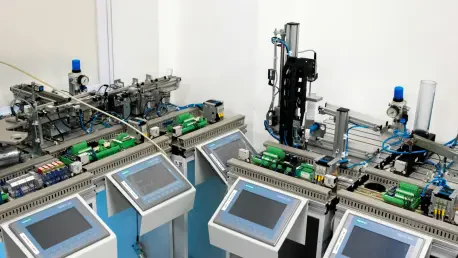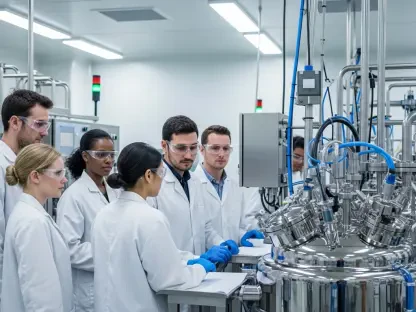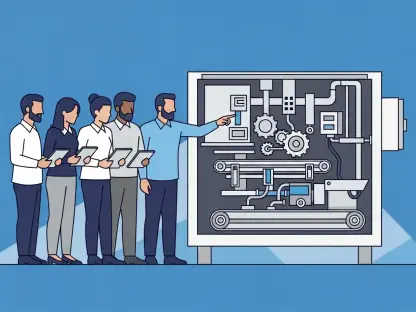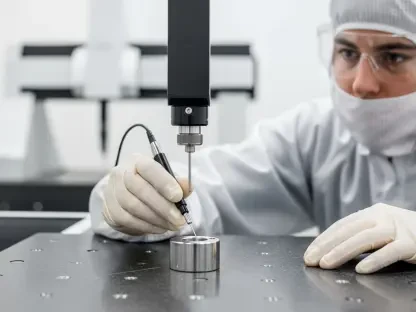Additive manufacturing (AM) and precision production face a staggering challenge: nearly 60% of manufacturers report inefficiencies due to disconnected systems and manual processes that slow down workflows and inflate costs. In a landscape where speed and accuracy are paramount, Authentise, a Philadelphia-based software solutions provider, has emerged as a key player in bridging these gaps through innovative integrations with platforms like 3D Spark, Digifabster, and Paperless Parts. This roundup dives into diverse industry perspectives, tips, and insights on how these strategic partnerships are reshaping manufacturing by enhancing connectivity, automation, and decision-making. By compiling opinions from various industry voices, the goal is to uncover the real-world impact of these tools and offer a balanced view on their potential to transform the sector.
Exploring a Connected Manufacturing Landscape
The Drive for Seamless Workflows
Industry leaders widely acknowledge that the push for digital transformation in manufacturing hinges on integrating disparate systems into a cohesive ecosystem. Authentise’s recent collaborations are seen as a step toward eliminating bottlenecks in additive and precision manufacturing. Many experts highlight that fragmented workflows—where design, quoting, and production operate in silos—often lead to errors and delays. The consensus is that integrations like these address a critical need for real-time data sharing and streamlined operations, positioning companies to stay competitive in a fast-evolving market.
Setting the Stage for Innovation
Feedback from manufacturing consultants suggests that Authentise’s partnerships with 3D Spark, Digifabster, and Paperless Parts are not just incremental upgrades but pivotal shifts in how production challenges are tackled. Some voices emphasize the potential for these tools to redefine efficiency by automating repetitive tasks and enhancing transparency. Others point out that the broader implication lies in fostering an open ecosystem, which could encourage further collaboration across software providers. This roundup aims to dissect these varied perspectives to understand the true scope of transformation these integrations promise.
Insights on Authentise’s Strategic Collaborations
Unpacking AI-Driven Decisions with 3D Spark
A significant point of discussion among industry analysts is how 3D Spark’s AI capabilities, integrated into Authentise’s Digital Design Warehouse, empower manufacturers with data-driven insights. Many note that the ability to analyze CAD files for cost, lead times, and environmental impact offers a strategic edge in make-or-buy decisions. This is particularly praised for enabling bulk assessments of part libraries for AM suitability, a process that traditionally consumes substantial time and resources.
However, opinions diverge on adoption challenges. Some industry observers caution that smaller manufacturers might struggle with the learning curve associated with AI tools, citing concerns over initial costs and training needs. In contrast, proponents argue that the long-term benefits—such as reduced expenses and lower carbon footprints—outweigh these hurdles. A balanced view suggests that while the integration holds immense potential, its success depends on tailored support for diverse company sizes.
An additional layer of debate centers on sustainability versus profitability. Certain manufacturing strategists stress that while 3D Spark’s focus on environmental metrics is commendable, not all businesses prioritize green initiatives over immediate cost savings. This tension highlights a broader industry question: how to align economic goals with ecological responsibility. The integration is seen as a catalyst for this conversation, pushing firms to rethink traditional decision-making frameworks.
Streamlining Operations via Digifabster’s Quoting Sync
Turning to Digifabster’s integration with Authentise Flows, many service providers in the AM and CNC sectors commend the seamless transition from instant quoting to production order creation. Industry feedback often points to the bi-directional sync as a game-changer, ensuring real-time status updates that boost transparency across sales and factory teams. This automation is frequently cited as a remedy for manual errors that plague order processing.
Differing views emerge on the reliance on such automated systems. While many applaud the reduction in human intervention as a time-saver, a smaller group of operational managers warns of risks like data mismatches if systems are not perfectly aligned. Tips from experienced users include maintaining regular system audits to catch discrepancies early. This integration is largely seen as a boon for scaling operations, provided there’s a balance between automation and oversight.
Another angle of discussion focuses on customer-facing benefits. Several industry commentators note that enhanced transparency not only improves internal workflows but also builds trust with clients through consistent updates. This perspective underscores a shift toward customer-centric manufacturing, where operational efficiency directly translates to better service delivery. The integration’s ability to bridge front-office and factory functions garners widespread approval for its holistic impact.
Boosting Agility with Paperless Parts’ Precision Link
The integration of Paperless Parts with Authentise Flows draws attention for its focus on automated order transfers, complete with critical details like material specs and compliance requirements. Many manufacturing professionals highlight how this direct connection cuts down delays by removing manual handoffs, ensuring smoother transitions from inquiry to shipment. The emphasis on data consistency is often mentioned as a key driver of operational agility.
Contrasting opinions surface regarding the role of human oversight in such automated setups. While some industry voices celebrate the near-elimination of manual tasks, others argue that complete reliance on automation could overlook nuanced production needs. A common tip from seasoned manufacturers is to designate checkpoints where staff can verify critical data, ensuring precision isn’t sacrificed for speed. This balance is viewed as essential for maximizing the integration’s benefits.
A broader perspective considers the adaptability of this tool to global demands. Certain analysts predict that as markets increasingly prioritize rapid turnarounds, integrations like this will become indispensable for staying responsive. Feedback often includes the need for continuous updates to handle evolving compliance standards, such as ITAR regulations. The general sentiment leans toward optimism, with many seeing this as a foundational step for future-proofing manufacturing processes.
Creating a Cohesive Ecosystem for Industry Needs
Synthesizing opinions on all three integrations, there’s strong agreement that Authentise is crafting a unified solution that spans design, quoting, and production stages. Many industry watchers appreciate how Digifabster and Paperless Parts tackle operational inefficiencies, while 3D Spark adds a strategic layer with its focus on long-term decision-making. This complementary nature is often cited as a strength, addressing interconnected challenges in a holistic manner.
Divergent views arise on the pace of ecosystem expansion. Some technology advisors suggest that further integrations—potentially involving predictive analytics or IoT connectivity—could amplify impact, urging faster development. Others advocate for a cautious approach, emphasizing the need to perfect current tools before scaling. A shared tip is for manufacturers to engage with user communities to share best practices, fostering collective learning within this ecosystem.
A unique angle comes from discussions on breaking down industry silos. Numerous thought leaders point out that Authentise’s open approach encourages collaboration not just within companies but across the sector. This is seen as a refreshing counter to traditional proprietary systems, with the potential to spur innovation through shared progress. The overall takeaway is that this ecosystem represents a shift toward inclusivity, redefining how manufacturing challenges are approached.
Key Takeaways and Practical Advice
Reflecting on the roundup, standout benefits emerge from each integration, as noted by various industry perspectives. Digifabster and Paperless Parts are frequently praised for slashing manual workloads through automated quoting and order transfers, enhancing speed and accuracy. Meanwhile, 3D Spark garners attention for driving sustainable and cost-effective choices via AI insights, offering a forward-looking approach to production planning.
For manufacturers looking to leverage these tools, actionable steps include starting with a single integration to test its fit within existing systems. Many suggest prioritizing quoting tools like Digifabster for immediate operational gains, while gradually exploring AI-driven analytics for strategic decisions. Another practical tip is to allocate resources for staff training, ensuring smooth adoption without disrupting daily workflows.
Additional strategies focus on scalability and impact assessment. Industry feedback often recommends setting clear metrics to evaluate efficiency gains and error reductions post-integration. Starting small and scaling based on measurable outcomes is a common piece of advice, allowing companies to adapt without overwhelming their operations. These insights aim to equip manufacturers with a roadmap for harnessing the full potential of Authentise’s partnerships.
Reflecting on Manufacturing’s Connected Path
Looking back, the discussions around Authentise’s integrations with 3D Spark, Digifabster, and Paperless Parts revealed shared optimism among industry voices about the power of connectivity in manufacturing. The diverse opinions compiled in this roundup underscored how these tools tackle inefficiencies, from manual errors to delayed decisions, while paving the way for greater transparency and sustainability. Each perspective contributed to a fuller understanding of how digital solutions reshape operational and strategic priorities.
Moving forward, manufacturers are encouraged to take incremental steps, such as piloting one integration to gauge its impact before full adoption. Exploring user forums and industry networks for shared experiences is also advised as a way to navigate challenges. For those eager to delve deeper, seeking out case studies on early adopters of these tools offers a practical next step to inform implementation strategies. This collective wisdom points to a future where interconnected systems could become the cornerstone of competitive manufacturing.









